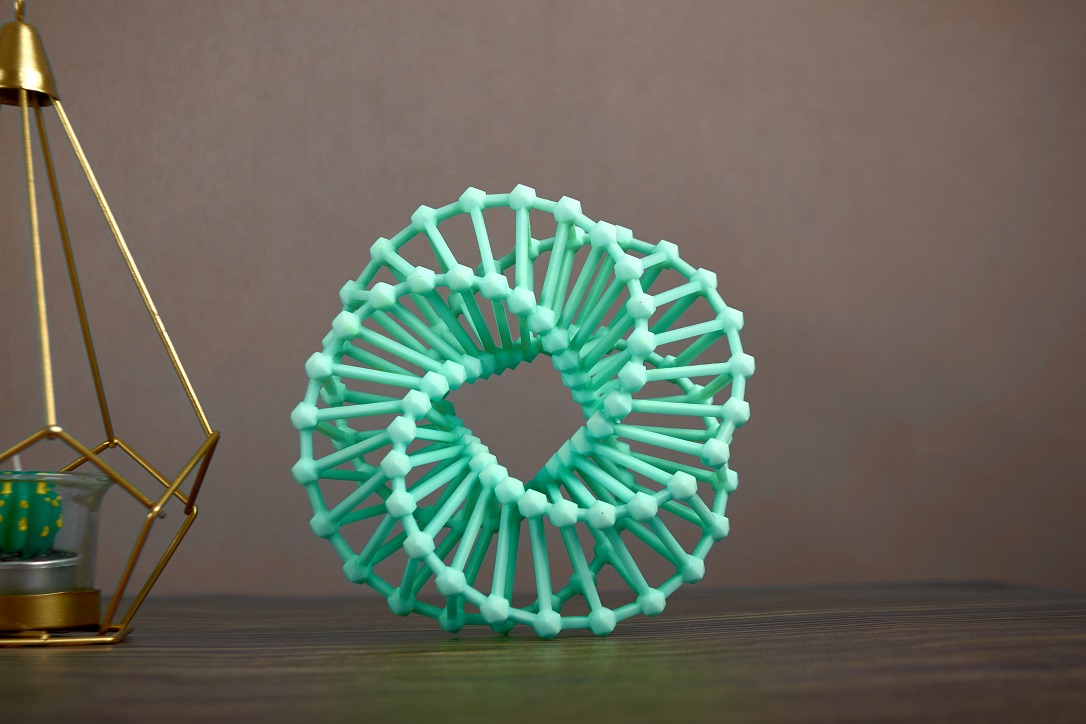Maximize 3D Printing Efficiency: Build Volume Optimization Tips
3D printing has shaped manufacturing nearly on all fronts, enabling the creation of complex geometries and custom parts with ease. However, as additive manufacturing scales up, optimizing build volume efficiency becomes increasingly important for keeping costs down and turnaround times fast. Buyers of 3D printing services must carefully consider build volume when selecting a 3D printing service provider to ensure your projects can be completed as efficiently as possible.

1. Optimize Part Orientation for Faster Printing
The first key to maximizing build volume is part orientation. How a 3D model is positioned and angled within the build volume can have a significant impact on print time, material usage, and post-processing requirements. In general, orienting a part to minimize its Z-height (the vertical dimension requiring layer-by-layer printing) will result in a faster build. Reducing the amount of support material needed is also critical. Supports are sacrificial structures printed underneath overhanging geometry to prevent collapse. While necessary, supports waste material and require removal after printing. An experienced 3D printing service provider will thoughtfully orient parts to decrease Z-height and support requirements, setting the stage for efficient builds.
2. Maximize Build Volume Utilization
Building upon the foundation of optimized part orientation, build volume utilization also matters immensely. Does a vendor arrange multiple parts intelligently to fill the build volume densely without compromising quality? High-end 3D printing services use advanced software to nest parts together and maximize the number of components that can be produced in a single print cycle. This is especially vital for batch production, where packing efficiency has a large impact on part cost. You should ask potential 3D printing service providers about your build preparation process and packing density targets to ensure they are getting the most out of each build.
3. Familiar With True Usable Build Volume
Another important consideration that ties into build volume utilization is the actual dimensions of a 3D printer’s build volume compared to the published specifications. The usable build volume is often somewhat less than the mechanical limits of the machine due to edge quality issues. A part arranged too close to the perimeter of the build area may have imperfections or poor surface finish. 3D printing providers usually define a smaller “safe zone” within the build volume for optimal results. You need to inquire about the true usable envelope for a given printer to ensure it will accommodate your part size and enable efficient packing.

4. Consider Technology Tradeoffs
Additionally, the type of 3D printing technology a vendor uses influences build volume efficiency. Powder bed fusion processes like selective laser sintering (SLS) and multi jet fusion (MJF) excel at packing efficiency since the unfused powder supports the parts being printed. This enables dense nesting and reduces the need for support structures. Conversely, filament-based fused deposition modeling (FDM) printers have lower packing density and often require extensive supports. For large build volumes, powder bed technologies are generally superior. Service providers with SLS or MJF capabilities may be a better fit for bulky parts or high-volume production. Understanding the tradeoffs between different 3D printing processes is crucial. By aligning your technology selection with build efficiency priorities, exploring the best online 3D printing services becomes a strategic next step in optimizing your project’s success.
5. Collaborate on Design for Additive Manufacturing
Guiding customers towards design choices that enhance build volume efficiency, configuring parts for additive manufacturing requires experience and skill. You should partner with service providers willing to collaborate closely on design optimization. An experienced vendor can suggest changes to part geometry, such as tweaking wall thicknesses, adding ribs and gussets, or modifying part orientation to improve printability and reduce material usage. Minor design adjustments can yield major efficiency gains when compounded across a full build volume. The right 3D printing partner acts as an extension of the customer’s product development team to unlock the full potential of additive manufacturing and maximize value.
6. Match Part Size to Printer Build Volume
Build volume efficiency also depends heavily on matching part dimensions to the specific equipment a 3D printing vendor has in their fleet. The build volume dimensions, layer height capabilities, and material compatibility vary widely between different printer models and brands. Some 3D printers have a height-limited build chamber that is wide but shallow, while others offer a tall, narrow volume. You must ensure a prospective vendor has machines with build envelopes appropriate for their application. If a print service only has small-format printers, a large part may need to be split into multiple pieces and bonded together after printing. This adds cost and complexity compared to printing the part in one piece on a larger machine. Alignment of part size with printer build volume is not only crucial for efficiency but also for ensuring the dimensional integrity of the printed parts—an area where understanding 3D print tolerances plays a pivotal role.
7. Assess Post-Processing Workflow Efficiency
Lastly, the quality control and post-processing workflow a 3D printing provider follows impacts overall productivity. Asking about 3D printing suppliers’ QA and post-printing process helps assess if parts will be finished efficiently and consistently. Removing a build full of parts that then sit in queue for post-processing creates a bottleneck that degrades turnaround time. An efficient 3D printing partner will have streamlined post-processing flows that keep pace with printer output, much like the advancements seen with pioneers in precision and innovation in 3D printing.
Final Words
In summary, maximizing build volume efficiency in 3D printing requires a holistic approach. By focusing on part orientation, packing density, technology selection, design optimization, and post-processing workflows, you can partner with 3D printing service providers to take full advantage of additive manufacturing’s benefits. With an emphasis on build volume utilization, businesses can scale up 3D printing effectively, reduce costs, and accelerate time-to-market. Realizing the transformative potential of additive manufacturing begins with an unrelenting focus on efficiency across the entire 3D printing value chain.




